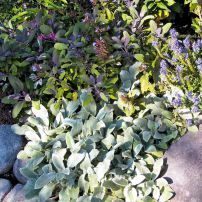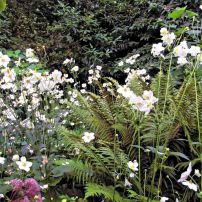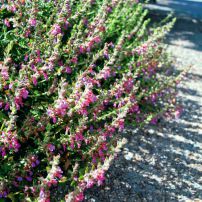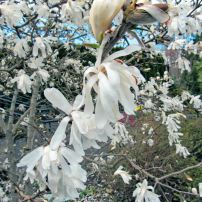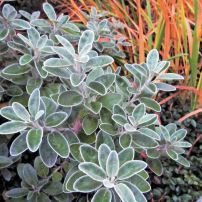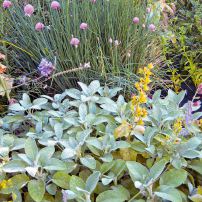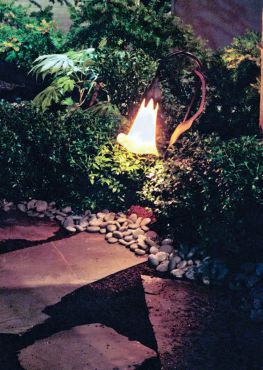
A garden can be a magical place after dark. As the sun wanes in the sky, subtle evening light begins to illuminate the garden in a completely new way.
Flowers and foliage add a new dimension to a garden when caught by the light of a full moon. Moonlight gardens are not meant to do what gardens are typically planted for, such as attracting butterflies or vegetable growing. Evening gardens are for pure drama.
Plants are intentionally chosen for their color and placed to reflect moonlight in open areas. Another sensory element is the fragrance from flowers that open and release in the evening.
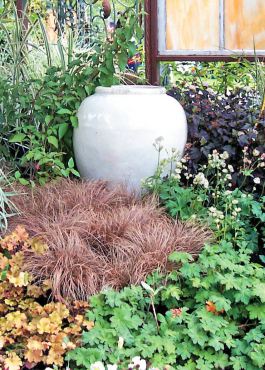
The best way to design a moonlight garden is to go outside in the evening and watch how the light of the moon plays in different spaces of the garden. Take into account the view from inside of the home. The garden will most likely be observed from indoors or near an outdoor room, where you relax in the evening.
Well-known British gardener Vita Sackville-West designed her famous white garden to be viewed from the upper rooms of Sissinghurst castle on a moonlit evening. You don’t need a castle view to make it work; a moonlit garden can be simple elegance by use of white pottery overflowing with dramatic foliage or garden spaces planted abundantly in silver and white and sited to capture evening twilight.
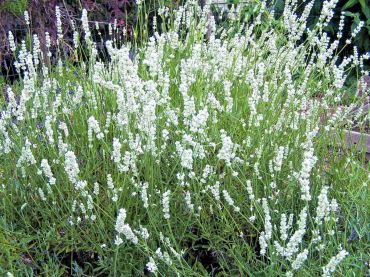
Place fragrant plants to drift aroma through open windows on a warm summer evening. Add areas of subtle landscape lighting, especially along a path, to invite a walk through the garden and enjoy how the garden really comes alive at night. Silver, gray and white foliage and flowers reflect the light, adding shimmer to a nighttime garden.
The beauty of a night garden is placement and enjoyment on lit evenings but another interesting fact to a nighttime garden is the attraction of nocturnal pollinators. Color is not the attraction in a moonlight garden. Some plants rely solely on night pollination and open as the sun goes down. Moths and bats are drawn in by night fragrances and search for nectar from plants and flowers that open only at night.
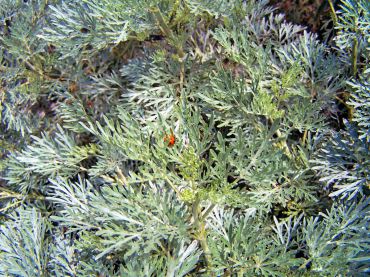 Fragrant Blooms for an Evening Garden
Fragrant Blooms for an Evening Garden
- Angel’s Trumpet (Brugmansia)
- Flowering tobacco (Nicotiana alata); annual
- Foam flower (Tiarella) “Iron Butterfly”; a particularly nice variety because of its dramatic black-striped foliage
- Four o’clocks (Mirabilis jalapa)
- Moonflower (Ipomoea alba); large, white blooms that only open at night
- Night-blooming Jessamine (Cestrum nocturnum)
- Oriental lily “Casa Blanca”; or try dwarf oriental lilies like “True Emotion” or “Little Rainbow” in container gardens on the patio
- Sweet autumn clematis (Clematis paniculata); vine
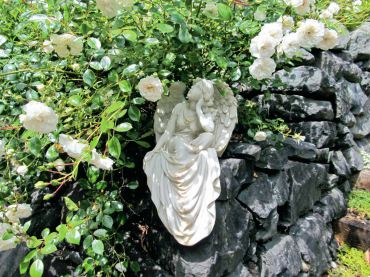
Foliage for an Evening Garden
- Artemisia “Silver Queen” (Artemisia ludoviciana)
- Dusty miller (Senecio cineraria)
- Hostas with heavy cream or white-colored variegation
- Lamb’s ear “Helen von Stein” or “Big Ears” (Stachys byzantina)
- Lavender (Lavandula angustifolia) “Fred Boutin”
- Lavender (L. stoechas) “Silver Anouk”
- Lavender cotton (Santolina chamaecyparis)
- Licorice plant (Helichrysum)
- Mexican feather grass (Stipa tenuissima)
- Sweet potato vine “Margarita” (Ipomea batatas)
- Variegated ribbon grass (Phalaris arundinacea variegata); try “Strawberries and Cream” for the hint of pink in the foliage
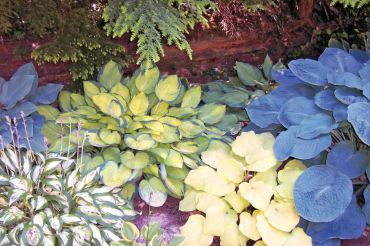
White-flowering Plants with Heavy Bloom in their Season
- Bridal veil spirea (Spirea x vanhouttei)
- Candytuft (Iberis sempervirens)
- Heather “Springwood White” and “White Perfection”
- Lilacs (Syringa) “Mme Lemoine,” “Betsy Ross”
- Magnolia
- Phlox “David”
- Snow-in-Summer (Cerastium t.)
- White petunias
- White-flowering rock rose (Cistus.) “Bennett’s White”




